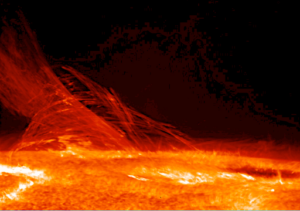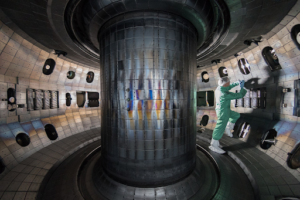
A star on Earth, tens of millions of degrees Fahrenheit, blast winds reaching sonic speeds, thousands of lives lost, that is the legacy of nuclear fission. Followed by two catastrophic nuclear accidents in Chernobyl in 1986 and the Fukushima in 2011, nuclear fission has had a controversial history to say the least. With the release of Christopher Nolan’s Oppenheimer, nuclear fission is back in the limelight. But hidden under the surface of the drama of nuclear fission, is the recent breakthrough in nuclear fusion. The energy process that occurs at the center of stars.
Nuclear fusion is the process that prevents the gravitational forces from collapsing stars. The energy source is seen as the key to achieving net-zero emissions. Carbon-free, exothermic, sustainable, and a potential source of near-limitless clean energy supply is by many known to be the holy grail of science. However, while hypothesized since the 1950s, fusion has always been for the distant future, as it is unable to be achieved efficiently.

The premise of nuclear fusion is different from that of nuclear fission. Whereas nuclear fission being an endothermic process involving the splitting of radioactive atoms such as Uranium-235 to release energy and host of fission products such as iodine, caesium, strontium, and xenon, nuclear fusion is all about combining elements, specifically hydrogen. The fusion is the process that gives stars life. Specifically, stellar nucleosynthesis is the creation of elements through fusion that prevents the high gravitational forces from collapsing stars. In stars, hydrogen atoms are smashed together at temperatures using the nuclei of carbon, nitrogen, and oxygen as catalysts to form helium and releasing massive amounts of energy and heat. Just to initiate the reaction requires a temperature upwards of 4 million Kelvin, with the Sun’s core reaching up to 15.7 million Kelvin. Fusion on Earth, a star in a bottle, has long been theorized as the holy grail of science, but only last year at the National Ignition Facility in California were physicists able to produce more energy than was put into it. By using high intensity lasers, to input 2 megajoules of energy to initiate the deuterium-tritium fusion, the resulting reaction released 3 megajoules of energy, yielding a net positive.

Thermonuclear fusion on Earth relies on the deuterium-tritium fusion reaction. Deuterium and Tritium are heavy hydrogen isotopes, a proton with 1 neutron, and a proton with 2 neutrons respectively, accelerated in a particle accelerator to temperatures close to 100 million Kelvin, orders of magnitudes that of the interior of the sun. However, what makes fusion expensive is tritium. With global tritium reserves estimated to be 21 kg, tritium is highly scarce and expensive.
Yet, the biggest limiting factor of fusion is the Coulomb barrier. The Coulomb barrier is the repulsion between two nuclei that prevents them coming close to undergo fusion. Overcoming this requires incredibly hot temperatures and incredibly high particle velocities. But, creating these insane temperatures required a massive amount of energy, which poses another problem of efficiency.
Given all these limitations, it is incredibly impressive for the physicists at the National Ignition Facility to yield more energy from fusion than was put in. Hopefully, it is the first in a series of breakthroughs in fusion that yield clean renewable energy for humanity. A star in a bottle may not be so distant after all.
Peer editor: Sy’Keria Garrison